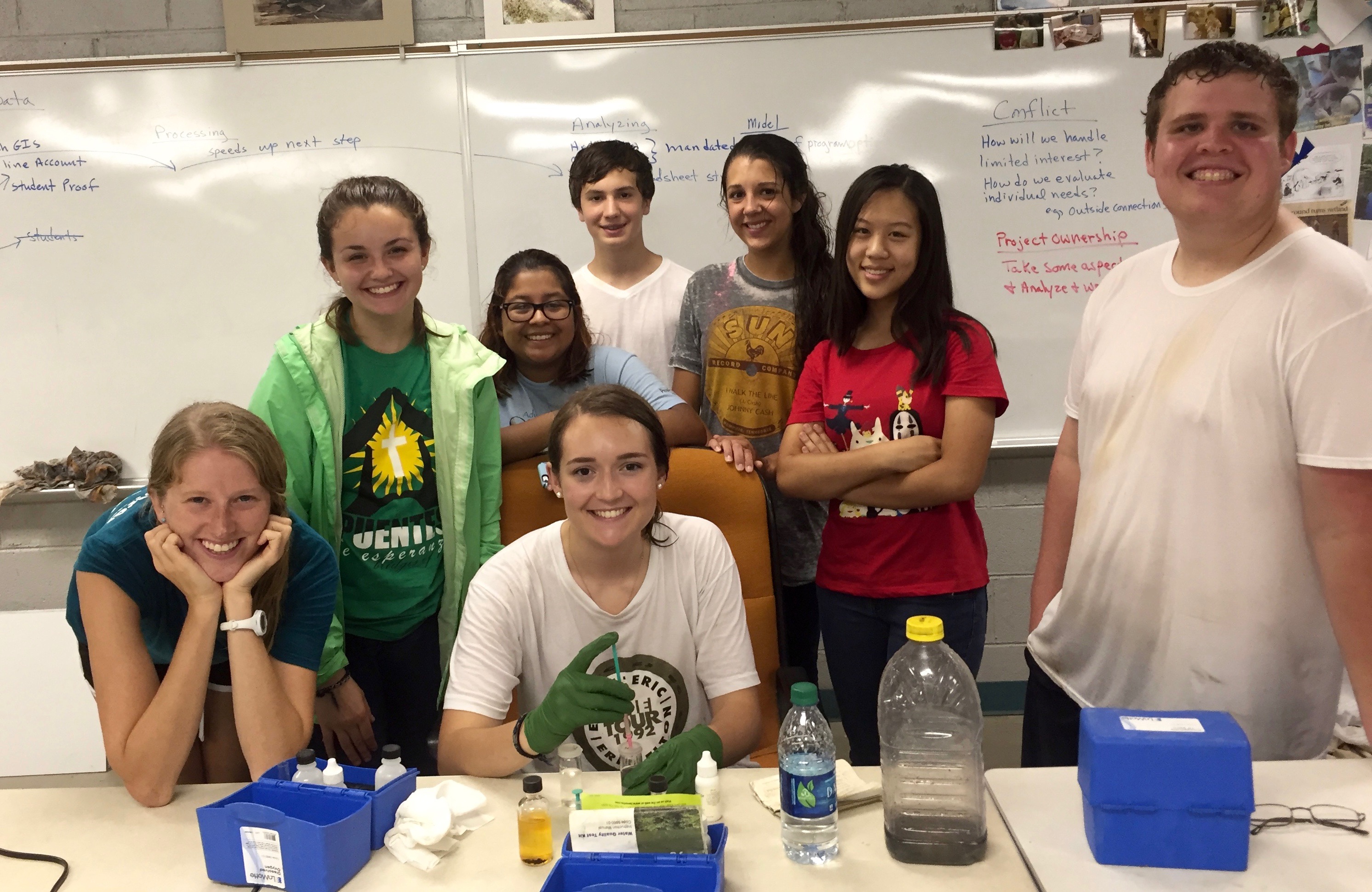Noteworthy happenings:
-July 12: Assisted Lynn Faust, a fellow field researcher, in collecting Twilight Bush Baby (P. australis) fireflies from the arboretum. To catch this particular species, we looked for the fireflies glowing yellow-orange vs. commonly seen green tinting. This was a nice relaxing pace compared to frog catching.
-July 13-17: My nature-adoring parents came to visit the Smokies! I may or may not have gotten them stuck on Clingman’s Dome during a hailstorm. But hey, go big or go home!
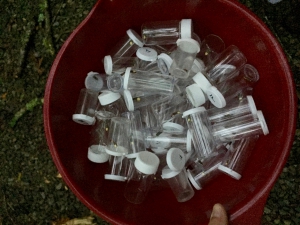
Vials containing P. australis fireflies
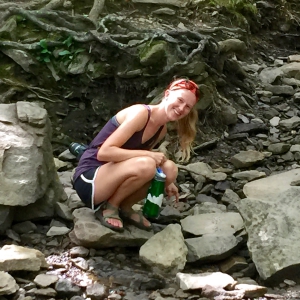
Katie searches for salamanders in Smoky Mountain National Park
-July 21: I presented my research and field techniques to the first-ever UTK aGIRLculture camp that aspires to influence high school girls in east TN to pursue science-oriented careers. At least 5/50 girls truly thought this frog gig was interesting – how cool!
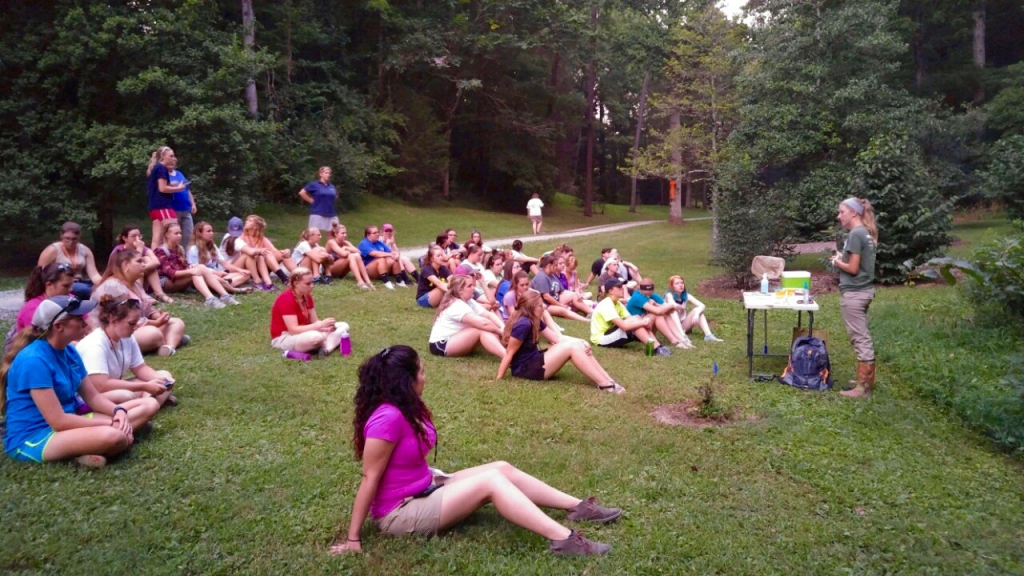
Katie speaks at the UTK aGIRLculture camp near a UT arboretum wetland
-July 22: I turned 24! The incredibly fun and loving CRESO staff hosted a party for me -they’re truly the best! 🙂
-July 23: An ARC GIS mapper, employed by the state, hosted a workshop for us here at CRESO. She taught us the basics on importing data, choosing the right map style and putting all the pieces together to map our wildlife projects. I briefly used ARC GIS during my senior year of college for a wildlife management project but it was great to have a refresher and see the program professionally presented.
-July 28: Last day of wetlands. To celebrate, we went out for ice cream. Then our shift ended early as a loud and fierce thunderstorm rolled through Clinton & Oak Ridge.
Lab Updates:
Lab work has finally begun, woo! Students who’ve shown interest in the DNA extraction component of my project schedule shifts with me to work in lab. During this time, we go through a brief set of slides on the “big picture” of the APP and perform some extractions on the swabs we’ve been collecting. We cover the “how to’s” of all the lab equipment and discuss the importance of minimizing contamination while purifying DNA. I think the students are getting just as antsy as myself at discovering the pathogen presence in our beloved wetlands!
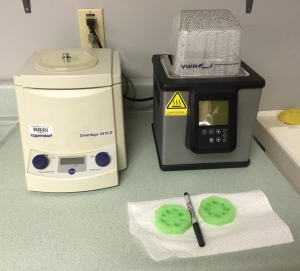
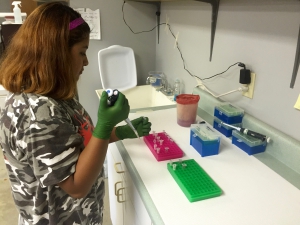
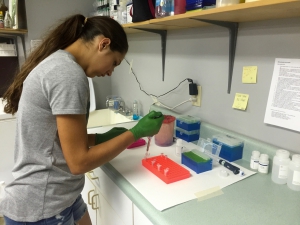
Students learn to use a centrifuge (left) and water bath (right).
Ericka (left) and Brynn (right) learn how to pipette during DNA extraction lab
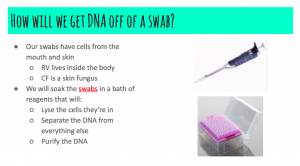
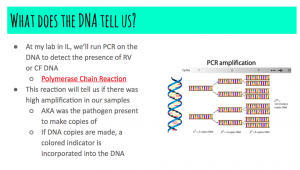
Here’s a brief glimpse at the presentation we review before we begin lab work. The red writing indicates links to youtube videos for additional explanations. Please note, none of the photos/art on these slides are my original creations, they were sourced through Google images.
But like anything else, the lab has championed it’s own slew of obstacles. In short, the AC in the lab room is out of order so we’re considering moving the entire set-up into my living space on the other side of the building where there is temperature control. Our main concern is the temperature at which the reagents and the equipment are stored at, and of course, the temperature with which people feel comfortable working.
The biggest personal challenge has been prioritizing my abundant sample selection of approx. 365 down to about half of that – gasp, the horror! It’s inherently mind-boggling because there are so many variables to consider: location, age class, species, pathogen and time of collection. As I’m paying due diligence to the scientific literature and sorting through my data, I can’t help but wonder, “Did I miss something? I thought I signed up for a summer vacation in east TN? Maybe hangout and catch some frogs with some kids?” HA HA HA, I jest! I knew this would be tough work, and I’m so glad I’ve been a part of this process.

